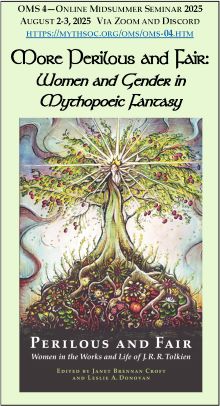Abstract
Examines two examples of J.R.R. Tolkien’s story-telling art: one an experiment in omission, the other in commission. The Tale of Earendel is established through poems about him, by references to the tale in other tales, by outlines, and by what seem to be consciously contrived omissions where it ought to have been. That there ought to be a Tale of Earendel to go with the other three now seems obvious, yet Christopher commented more than once that it “was never written.” Of the many attempts at the Beren and Lúthien story that Tolkien made over the years, “The Tale of Tinúviel” is the only one to be what Tolkien described as “drawn in fullness,” that is, having a consecutive beginning, middle, and end. The naïve voice and the direct address of the narrator point to a specific influence on Tolkien that has been hitherto overlooked: the lais of Marie de France.
Creative Commons License

This work is licensed under a Creative Commons Attribution-NonCommercial-No Derivative Works 4.0 International License.


